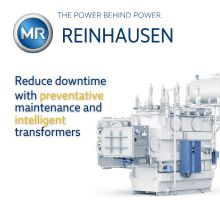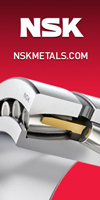Nippon Steel, Sumitomo Metal Industries Enter Master Integration Agreement
09/23/2011 - Nippon Steel Corp. and Sumitomo Metal Industries have entered into a Master Integration Agreement in preparation for the integration of their businesses in October 2012.
Nippon Steel Corp. and Sumitomo Metal Industries, Ltd. announced their agreement to integrate their businesses on October 1, 2012. In preparation for the integration, the two companies have entered into a Master Integration Agreement with the spirit of their relationship based on equality. The merger agreement follows due discussion by the Integration Study Committee, which was co-chaired by the Presidents of both companies.
The companies noted that the integration of their businesses is subject to, among other things, the approval of the relevant authorities and shareholder approval at the companies’ individual shareholder meetings.
As part of the integration of their businesses, the companies intend to make a thorough effort to seek synergies by combining their respective advanced resources and by consolidating the superior areas of their respective businesses. The companies also plan to accelerate the implementation of business structure reform by such means as pursuing greater efficiency in domestic production bases and expanding overseas businesses. Through realization of these objectives at an early stage, the companies aim to be “the Best Steelmaker with World-Leading Capabilities” by boosting competitiveness in all areas including scale, cost, technology and customer service.
By maximizing the potential of steel as a fundamental industrial material, the companies hope to support the development of customers both in and outside of Japan, while also contributing to further growth of the Japanese and global economies and the improvement of global society.
While the companies have implemented various measures to strengthen each company’s competitiveness since the execution of their alliance agreement in 2002, substantial changes in the business environment surrounding the steel industry prompted the companies to commence consideration of business integration in February 2011. Based on additional changes in the operating environment for the steel business, such as the sharp appreciation of the Japanese yen, the companies are now planning to further accelerate the examination of specific integration measures, in order to realize the advantages of the integration at an early stage.
Following execution of the memorandum regarding consideration of the business integration (February 3, 2011) and now, execution of the master integration agreement (September 22, 2011), the groups have set forth the following planned schedule for additional milestones:
· April 2012 – Execution of merger agreement
· June 2012 – Shareholder meetings to approve the merger agreement
· October 1, 2012 – Planned date of merger
Following the merger, the companies plan for the integrated company — Shinnittetsu Sumikin Kabushiki Kaisha — to strongly advance the following six items, with the aim to be “the Best Steelmaker with World-Leading Capabilities”, at an early stage after the integration of the businesses.
Globalizing the Steel Business — The integrated company will establish a global network for supplying a wide range of product types with a focus on high-grade steel, by such means as re-organizing and reinforcing existing overseas manufacturing bases and promptly realizing new projects that are under consideration by the respective companies. This will include:
· Re-organization and expansion of the companies’ existing manufacturing, processing, and sales bases in emerging countries
· Reinforcement of existing overseas manufacturing and sales operations as well as establishment of new such operations
· Improvement in capability to provide comprehensive proposals and services to customers by combining and complementing existing product types, e.g.
o Combining steel sheets, steel pipes, steel bars and wire rods, and crankshafts, etc. in the automotive sector
o Strengthening capability to provide high-grade steel such as steel pipes and steel sheets and plates in the resources/energy sector
o Enhancing capability to provide comprehensive proposals regarding rails (Nippon Steel) and wheels (Sumitomo Metals) in response to the increasing demand for rail transport infrastructure
The companies said the integrated company will aim to achieve 60 to 70 million tonnes of global production capacity by further accelerating its overseas business development.
Utilizing World-Leading Technologies — By integrating the companies’ capabilities in manufacturing technology, product technology, and R&D, the companies intend for the integrated company to lead the world in advanced technology and energy efficiency. By maximizing the potential of steel, the integrated company will also respond to the increasingly sophisticated needs of customers.
Improving Cost Competitiveness — The integrated company will aim to realize synergies of around 150 billion yen per year (starting approximately three years after the Business Integration) by implementing the following measures.
· Reduce costs by sharing best practices for operational and manufacturing technologies
· Improve production efficiency by integrating manufacturing processes
· Improve productivity by optimal allocation of tasks among production lines
· Strengthen ties among steel mills
· Improve efficiency in procurement and transport of raw materials
· Reduce equipment, repair and material costs by standardizing equipment specifications, etc.
· Compress redundant assets
· Unify financing and improve capital management in relation to the integrated company and its subsidiaries
· Improve efficiency with respect to its domestic and overseas group companies
· Improve efficiency in administrative/back-office functions and utilizing human resources for overseas development, etc.
Reinforcing Non-Steel Business Segments — To reinforce each business, the companies will also consider business integration of non-steel business segments such as engineering, urban development, chemicals, new materials and system solutions. The integrated company will also strengthen its capabilities to offer comprehensive proposals to customers, by improving synergy among its businesses while maintaining steel as its core business.
Maximizing Corporate Value and Improving Evaluations from Shareholders and Capital Markets — The integrated company will pursue greater competitiveness of its domestic manufacturing bases while also devoting management resources to overseas businesses by implementing all of the foregoing measures. With these efforts, the integrated company will seek to obtain even higher evaluations from shareholders and capital markets.
Aggregating Resources — The companies plan for all employees to work together as a team toward realizing the above goals at an early stage. Further, the integrated company intends to share its strategies with its group companies, as well as cooperate with partner contracting companies, while also pursuing harmonization with local communities, etc.
In addition to the manufacture and sale of iron and steel, Nippon Steel’s business activities also include engineering and construction, urban development, chemicals, new materials, and system solutions. Established in 1970, the company reported net sales of 4,109.7 billion yen in fiscal year 2010. The company has 59,183 employees and an annual crude steel production capacity of 34,920,000 tonnes.
In addition to the manufacture and sale of iron and steel, Sumitomo Metal Industries’ business activities also include new materials, civil engineering / plant construction, electrical, electric power supply, and system solutions. Established in 1949, the company reported net sales of 1,402.4 billion yen in fiscal year 2010. The company has 22,597 employees and an annual crude steel production capacity of 12,900,000 tonnes.


.png?mediaprotectionhash=3750102d6e35cf158ae995d2a880e68af6bba8e3c74cb3bcacc2f4a4a71af45a&width=220&height=200&ext=.png)
-(1)-Reinhausen-(1).jpg?lang=en-US&ext=.jpg)




-Cutsforth.png?width=100&height=200&mediaprotectionhash=4482cb5f76125ba3348ab8851ab91d4ab118b35e517c017615489ff39c41f1af&ext=.png)